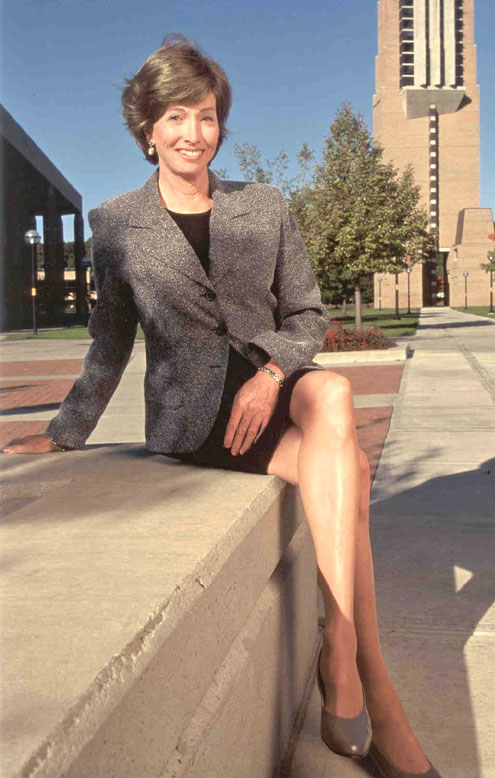
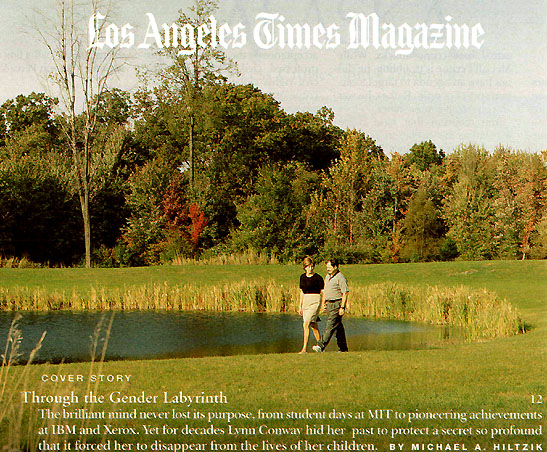
Through the Gender Labyrinth
How a bright boy with a penchant for tinkering grew up to be one of the top women in her high-tech field
Late in 1998, a young researcher delving into the secret history of a 30-year-old supercomputer project at IBM published an appeal for help. As Mark Smotherman explained in an Internet posting, he knew that the project had pioneered several supercomputing technologies. But beyond that, the trail was cold. IBM itself appeared to have lost all record of the work, as if having experienced a corporate lobotomy. Published details were sketchy and its chronology full of holes. He had been unable to find anyone with full knowledge of what had once been called "Project Y."
Within a few days, a cryptic e-mail arrived at Smotherman's Clemson University office in South Carolina. The sender was Lynn Conway, one of the most distinguished American women in computer science. She seemed not only to know the entire history of Project Y, but to possess reams of material about it.
Over the next few weeks, Conway helped Smotherman fill in many of the gaps, but her knowledge presented him with another mystery: How did she know? There was no mention of her name in any of the team rosters. Nor was any association with IBM mentioned in her published resume or in the numerous articles about her in technical journals. When he probed, she would reply only that she had worked at the company under a different name--and her tone made it clear there was no point in asking further.
What Smotherman could not know was that his appeal for strictly technical information had presented Lynn Conway with a deeply personal dilemma. She was eager for the story of IBM's project to emerge and for her own role in the work to be celebrated, not suppressed. But she knew that could not happen without opening a door on her past she had kept locked for more than 30 years.
Only after agonizing for weeks did Conway telephone Smotherman and unburden herself of an extraordinary story.
"You see," she began, "when I was at IBM, I was a boy."

Today the intricacies of gender have worked their way into cultural, scientific, even political debate. Why shouldn't girls compete against boys in math, or on the playground? Would little boys be less beastly if society discouraged rough play? Where, in fact, does our gender identity reside: In our physique? Our brain? Or somewhere deeper, in our soul?
That society has begun to grapple openly with these issues suggests how profoundly absorbing the subject is. "There's a little bit of each gender in each person, so there's something intriguing about what exists on the other side," says George Brown, a psychiatrist at the Veterans Administration Medical Center in Johnson City, Tenn. "But there's also a threat that in exploring the subject I might find out something I feel is very dangerous." This implicit threat may explain why, over the past 30 years, science has learned less about the mysteries of gender than about the origins of the universe.
Transsexualism, the most extreme expression of gender discordance, may be our last taboo. At least 40,000 Americans have undertaken the surgery and therapy to make the transition from male to female and as many as 20,000 more may have gone from female to male. But so strong is the stigma, so blatant the discrimination, that most keep the change a secret by shedding their old lives, jobs and friends along with their old gender. Lynn Conway, among the first Americans to undergo a sex change, came to give the secret life into which it forced her a name: "stealth."
Today Conway lives in a home outside Ann Arbor, where she is professor of computer science emerita at the University of Michigan. Slim and tall, with light brown hair, long, slender fingers and an engineer's unsentimental directness, she says she knew that the operation that changed her gender would consign her to a life of hardship. And she knew it would be worth it. Peering out over the 24 acres of meadow, marsh and woodland she shares with her boyfriend of 13 years in a rural district of lower Michigan, she recalls the risks she confronted three decades ago. "The prediction by everyone then was that what was happening to me would be a disaster," she says. "But sometimes in your gut, you know something is right."
A CHILD, WHOM FOR REASONS OF FAMILY PRIVACY WE SHALL call Robert Sanders, was born in Mt. Vernon, N.Y., to a schoolteacher and a chemical engineer who divorced when he was 7. A round-faced little boy with direct blue eyes, Robert by the age of 4 was giving off signals--faint to outsiders but alarming to his parents--that he was not a normal male child. He shunned the other boys and preferred the sedate play of girls in groups. One day, walking through a clothing store in Scarsdale with his mother, he stopped, transfixed by a girl's cotton print dress, one with puffy sleeves like his little friend Janet wore.
"Can I have one like that?"
He had just gotten out the words when he felt as though every eye in the store was fixed on him. "No, you may not have that dress," his mother snapped. "You are not a girl!" It was obvious even to his 4-year-old ears that he had committed some terrible blunder, but he did not know what.
From that point on his parents watched carefully for any signs of effeminacy, which they mercilessly exterminated. They cut his hair back almost to the scalp, leaving just enough in the front to be combed back. His mother stopped cuddling him, barely touched him anymore, as though fearing that her previous expressions of maternal love had somehow softened him. He ended up feeling that he was being watched all the time.
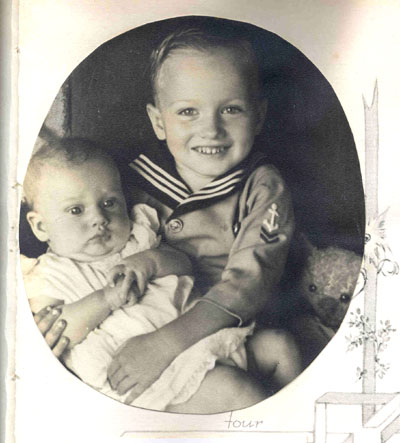
The vigilance ebbed slightly after his parents' divorce. Robert's mother was so busy teaching that he and his younger brother, Blair, were left to their own devices after school. The brothers shared an unquenchable interest in nature and science. The house was full of the flotsam and jetsam of their mother's schoolroom assignments--scrap lumber, galvanized tin, all kinds of junk that became the raw material for countless backyard projects. Whatever was not on hand they scrounged during weekend forays to the public dump.
When school ended for the summer, the projects started, fueled by Robert's precocious talent for design and construction. He hand-built a hi-fi system, and then a wood-framed enlarger for the brothers' hobby of photography. In high school he resolved to build a radio-telescope. It was 1952, and searching the skies for radio waves emitted by cosmic bodies--now an indispensable tool of modern astronomy--barely ranked as an authentic scientific application. Nevertheless, Robert studied nonstop, drafted a design, acquired the necessary lumber and aluminum sheeting and, with Blair's help, erected in the backyard a working contraption, 12 feet in diameter. "Robert had this very strong personality trait of studying things well, coming up with a plan and carrying the plan through to completion," Blair says. "There's no stopping a person who continually does that."
What Blair did not comprehend was that his older brother's determination shrouded--or perhaps counterbalanced--deep inner turmoil. With puberty Robert's unremitting feelings of girlishness boiled over, setting up a violent conflict with the inexorable masculinization of his body. He did everything he could to forestall what was happening--surreptitiously shaving his legs, shaping his eyebrows, pilfering women's clothes from relatives' homes. But these pitiable cosmetic measures only sharpened his internal conflict.
In 1950s Westchester County, sex remained firmly outside the bounds of polite discussion, even within families. There was no one he could talk to for support, encouragement or explanation. His mother glared at any signs of incipient effeminacy but never raised the issue in conversation. The denial within Robert's family was fully reflected in society at large.
The prevailing view of transsexualism as a psychological disturbance is both the cause and the result of the poverty of scientific research into the foundation of gender identification. What is known is that there are four broad and somewhat related elements. These can be categorized as genetic, hormonal, physical and neurological. In most cases all four are in sync. A female child inherits one X chromosome from each parent and develops, under the influence of the "female" hormone estrogen, secondary sex characteristics such as breasts and the ability to ovulate. This child has a vagina, uterus and ovaries, and considers herself psychologically a girl. A male child inherits one X and one Y chromosome and develops facial hair and greater muscle mass under the influence of testosterone. This child has a penis and testes and psychologically considers himself a boy. But it sometimes happens that nature, usually so efficient at managing the cascade of biological events that produces a newborn, leaves one or more of these elements out of sync. The Y chromosome might lack a gene allowing the body to respond to the male hormone, in which case the result is an XY female--outwardly indistinguishable from a normal female. The reproductive system is susceptible to a wide range of defects that come under the category of "intersex"--the presence of biological elements of both genders. In a surprisingly high number of births--as many as one in 500, according to pediatric surgeons--a child is born with anomalous genitalia that in the most severe cases leave its gender hard to determine.
In the rarest cases the sole element out of sync is the neurological. The cause and, therefore, the remedy for the mental conviction that one is a whole being trapped in a perfect, but profoundly inappropriate, body is a mystery buried deep in the labyrinth of the mind.
ROBERT COULD DO LITTLE TO EXPLORE THIS MAZE until he left home at 17 to study physics at MIT. University life was liberating. He thrived in the rarefied competition of 900 of the country's brightest high school graduates, finishing his freshman year in the top 2% of his class. For the first couple of years he kept one foot planted uneasily in the "normal" life of a young heterosexual, going out occasionally with groups of male and female friends. On these dates, "he was as normal as any innocent kid," recalls Dorothy Hahn, who married Robert's closest MIT friend, Karl. "He was awkward with girls, but not excessively so."
But release from his mother's repressive scrutiny also gave him the space to air what he sensed was his truer self. He gave his increasingly assertive female persona the name Lynn--a derivative of his middle name--and clandestinely purchased women's clothing from the Sears catalog. When he learned that a group of acquaintances was burgling pharmacies for narcotics, he did a characteristically thorough survey of the endocrinological literature and presented them with an order, crafted with a physician's precision, for injectable estrogen. The hormones did their job. Robert's skin and features softened, his body hair thinned, he began to develop breasts. Gingerly, he began coming out to a few close friends, then wearing women's clothing in public, where his androgynous femininity attracted male attention. A photographic self-portrait from this period shows a waif-like "Lynn" in a modest black dress, hair tucked behind one ear, bare legs shod in simple pumps. Some of his new male friends became lovers, yet Robert never saw these as homosexual relationships, for although his partners knew he was male, they regarded him not as a boy but as a girl, as "Lynn."

This lonely experimentation anticipated what has since become the professional standard in the treatment of transsexuals--the "real life experience," in which the medical and legal systems require patients to live for a year in their "psychological gender" before being judged ready for sex-change surgery. Without professional support, however, Robert's double life--he still attended class as a man--only intensified his profound psychic confusion. By his senior year the strain was starting to tell. His female identity and his black-market hormones were increasingly at war with his body's determination to create the brow ridge and other features that telegraph masculinity to others on a subconscious level.
He started drinking heavily, self-medicating his psyche with buck-a-bottle fortified wine the way he self-medicated his body with estrogen. He expressed abhorrence of his physique and talked about castrating himself to arrest his body's relentless output of testosterone, going so far as to investigate how to create a germ-free environment to undertake the surgery. Karl Hahn, who had transferred to a premedical program at Boston University, was sufficiently alarmed that he found Robert a psychologist.
The man Karl had in mind was a professor at the medical school who reputedly knew something about transsexuality and the available options. (News of Christine Jorgensen's Danish sex-change operation had broken not long before.) At the very least, Karl reasoned, this would provide Robert with a professional shoulder to lean on, someone to assure him that he wasn't going insane, that he need not grapple with his bewildering condition in hopeless isolation.
The consultation began auspiciously. Robert described his feelings of sexual disjunction as the doctor listened tolerantly. Then, abruptly, with a serene detachment that gave his words a horrible finality, he punctured Robert's hopes.
"Unfortunately, there isn't anything you can do to become a woman," he said. Crisply he outlined the stark choices. Robert could cease the hormone-taking and resolve to end this phase of sexual experimentation on his own, or the state of Massachusetts would do it for him, by institutionalizing him as a sexual deviant.
"But I've heard about these operations," Robert protested. "I thought you would tell me where to go to get them."
"Those operations don't make you into a woman," came the reply. "They just make you into a freak."
ROBERT HIT BOTTOM. HE FLUNKED OUT OF MIT. ON WHAT was to have been his graduation day he was in San Francisco, living on the fringes of the gay community, still desperately searching for where he fit. But he found no answers there, because he did not see himself as a gay man attracted to other men, but rather as a woman attracted to men--if only he could rectify nature's dirty trick.
After his hormone supply ran out the following winter, he ended up back home, working days as a repair technician at a hearing-aid company. With Blair away at college, Robert and his mother occupied the house alone, coexisting uneasily in mutual avoidance, rarely speaking, rarely even passing through the same room, lest the slightest physical encounter remind them of the unaddressed issues between them. Having failed to find a community that would have him, Robert felt degraded and humiliated. The silence of the house settled on him like a reproach.
Again, it was intellectual restlessness that stirred him from his torpor. The deadening busywork of hearing-aid repair could not keep him for long, so in 1961 he enrolled at Columbia University. There he once again excelled, earning bachelor's and master's degrees in electrical engineering after only two years. More important, his sterling work landed him a job offer from Herb Schorr, a Columbia instructor who was also a research executive at IBM.
Schorr's secret "Project Y" team was engaged in designing the world's fastest supercomputer. Soon to be renamed ACS, for "Advanced Computing System," the project had the special status of being a pet of IBM's chairman, the imperious Thomas J. Watson Jr., who was irked that his company had fallen behind its rivals in its efforts to reach and hold this prestigious beachhead.
As elite and insular as the Manhattan Project, ACS was shortly relocated to Menlo Park, Calif., where the team of 200 engineers occupied its own building on Sand Hill Road--a stretch of highway famous today as the center of Silicon Valley's venture capital community. For Robert the sheer cerebral bravado of the group was a revelation. Energized by the pioneering work taking place around him, one day he experienced a flash of insight that at a stroke solved one of the team's hardest problems.
The issue, vastly simplified, was how to allow the machine to execute more than one instruction--say, adding, multiplying, or comparing two numbers--at a time. A computer can handle several instructions at once if they are independent--say, if two instructions involve adding two unrelated pairs of numbers. But often one instruction cannot be executed until another is completed--for example the addition of two numbers, one of which is the sum of two others summed by a prior instruction. The trick is to figure out which instructions can be jumped ahead in line.
Robert's insight, which became known as "dynamic instruction scheduling," or DIS, was a way of constantly analyzing a string of instructions and ordering them efficiently while keeping the number of transistors performing these logical tests--still, in the mid-1960s, extremely expensive--to a minimum. Within days the team had incorporated DIS into the ACS architecture. Over the years it would filter into generations of high-performance, so-called "superscalar," computers.
Yet as he reached this pinnacle of professional achievement Robert's personal life was coming apart. For he had not moved to California alone.
DURING THE SUMMER BETWEEN COLUMBIA terms Robert had befriended a co-worker at the hearing-aid company named Sue. (Her name has been changed.) She was a pretty brunet from a Catholic family working to raise tuition for nursing school. When school resumed that fall they continued meeting socially in the city. They took walks in the park and enjoyed casual lunches, forging a relationship that the inexperienced Robert, oblivious to Sue's real feelings, considered platonic. One night after one of their non-date "dates," Sue got affectionate and Robert, despite himself, got aroused. The next thing they knew, Sue was pregnant. For months Robert fended off Sue's insistence that they marry, but finally gave in. "I felt like it was a trap," Lynn says. "But the fact there was going to be a baby seemed like a miracle. I really looked forward to it. It was, like, 'Robert's getting trapped, but Lynn gets to have a baby.' I didn't realize the implications."
To friends aware of Robert's psychological struggle, his marriage suggested that he had decided to surrender to living with a permanent dichotomy in his sexual being. For a while that might have been true, as Robert immersed himself in the mundane demands of married life. Their daughter Kelly was born in February 1964. (The daughters' names have been changed.) Amid the excitement of his new work and the daily routine of raising a family on his $15,000 salary, the conflicts of gender seemed to recede.
Any personality quirks he did display melted into the eccentricities of a team of gifted engineers engaged in teaching a room-sized contrivance of transistors and wiring how to cogitate. Robert "was always somewhat strange, but all these guys were strange," recalls Herb Schorr, chuckling. "My nickname was 'The Zookeeper.' " Erudition in this group ran deep rather than wide; they could debug the circuits of a digital machine from deep within its logic structure, but of the outside world they were as innocent as monks. "When these guys went out for beers in the evening, they would sit and talk about technical things, not sexual things," Schorr says. No one seemed to notice even a hint of effeminacy in Robert's manner; if anything he had a reputation of being "macho," an aficionado of high-speed motorcycle riding, fit enough to easily handle hikes on social outings to Mt. Whitney or Yosemite National Park that left his colleagues winded.
Meanwhile, the medical establishment was finally starting to acknowledge gender identity issues. In his 1966 book "The Transsexual Phenomenon," Harry Benjamin, a prominent New York endocrinologist, not only gave the syndrome a name but also chided his peers for their ignorance: "Even at present, any attempt to treat these patients . . . in the direction of their wishes--that is to say 'change of sex'--is often met . . . with arrogant rejection and/or condemnation." Benjamin wrote of patients he had treated with hormones and steered toward surgery. Robert, however, reacted to this glimmer of professional understanding not with relief but despondency.
As physical masculinization was catching up to him, his marriage to Sue was faltering under the pressure of mutual frustration. Their sexual relations had been rare and unsatisfying, although not nonexistent: A second girl, Tracy, was born in 1966.
He was 28, already raising a family, manacled so firmly into the role of father, husband and man that he felt it would take a Houdini's skills to extricate himself.
The motorcycle rides became more breakneck, the rock climbing more adventurous. At first the fear was distracting. But implicit in the danger-seeking was self-destructiveness, a subconscious hope that an accident might bring his inner guilt and turmoil to an end. Deliverance never came.
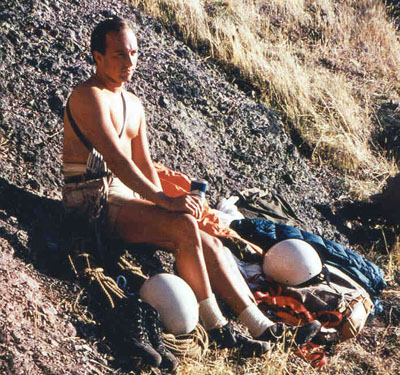
On a drive home from a dinner party one evening, he pulled to the side of the road, overcome by feelings of alienation. Breaking down in tears he blurted: "I need to be a woman." It was the first time Sue had heard her husband put his feelings of disaffection into words. But that did not make them easier to talk about. The isolation only seemed to increase. Brooding alone one night in 1967 as Sue and the children slept, he broke down again. Weeping uncontrollably, he dug out a Colt .45 automatic pistol he had used for target practice and placed it to his head. He was holding it when Sue, awakened by the wailing and sobbing coming from the next room, appeared at the door, frozen in shock. The next thing Robert knew, the gun was on the table and Sue was assuring him that they would do anything they could to relieve his torment.
With Sue's consent, Robert contacted Benjamin, then in his 80s and on the eve of retirement. Benjamin agreed to accept him as one of his last patients. Under Benjamin's care, Robert resumed estrogen therapy and prepared for an operation that would remove the physical signs of his maleness and give him female genitalia, the "change of sex" he so ardently desired. The operation would prove to be the easy part.
ROBERT HAD VISUALIZED A NEARLY SEAMLESS TRANSITION from male to female. At IBM he would have his supervisors change his records so that he was no longer Robert, but Lynn, and he would transfer to another lab to start afresh. At home, following the separation and divorce he knew were unavoidable, he would simply visit as "Aunt Lynn"; at 2 and 4 the children should be young enough to barely register the change. But problems surfaced immediately. At work, his supervisor, an engineer named Don Rozenberg, recognized instinctively that IBM possessed exactly the wrong culture to indulge Robert's unprecedented proposal. "It was still white shirts, blue serge suits and wingtip shoes," Rozenberg says. "This simply wasn't the IBM image."
Indeed, IBM corporate management, unable to see how Robert could keep his past secret from his co-workers, feared disruption. "The decision was made," Rozenberg recalls, "to quietly move him out of the company." For Robert the loss of his job could not have come at a worse time. His sex reassignment surgery, as it was formally known, was scheduled to take place in a few months. It would cost about $4,000--an enormous sum in 1968--not including several thousand dollars in ancillary costs: electrolysis, counseling, hormone therapy. Beyond the financial implications, the stigma of banishment from one of the world's most respected corporations fell upon him like an excommunication.
The few friends and colleagues Robert told of his medical situation identified with Sue, berating him for misleading her and exposing his young family to shame and disgrace. Nevertheless, Robert felt he had to go through with the surgery; it was change or die. In November 1968 he boarded a PSA plane for San Diego, then a bus to the Mexican border and a taxi through Tijuana to the medical clinic of Dr. Jose Jesus Barbosa, a plastic surgeon with an elite practice among affluent Americans. Barbosa also had experience performing the so-called penile inversion procedure, in which the sensitive skin of the penis is used to construct a vaginal canal. In a 4 1/2-hour operation Barbosa transformed Robert's genitalia into those of a woman, fully sensitive and even capable of orgasm.
But the surgery failed to address another issue. Under pressure from family and friends who saw Robert's choice as something depraved, Sue wavered about letting "Aunt Lynn" stay in the girls' lives. Her doubts grew when, after Robert left IBM, the family spent three months on welfare. The troupe of county social workers thus introduced into their lives were openly appalled at Robert's decision. Sue, worried that the children might be taken from her, finally barred the girls' father from their lives on threat of obtaining a court order.
Lynn, now living as a woman, did not underestimate the threat. An encounter with the law would mean public exposure and the undoing of all her efforts to start life over. So she capitulated. Sue granted her a final visit with the children in late January 1969. Dressed as a man for the last time in her life, Lynn spent a few hours watching her towheaded toddlers chase their shadows across the playground of a Palo Alto park and tried to stifle the flood of family memories that washed over her, such as the camping trips on which Robert would hike Yosemite's trails with little Kelly strapped into a carrier on his back.
When the setting sun signaled that the afternoon was drawing to an end, Lynn called to them, enveloped each girl in hugs, and tried casually to deflect their questions about why Daddy had to leave so soon and where he was going. Finally, her heart breaking, she walked away. She would not see either of them again for 14 years.
AS THE '60S WOUND DOWN, THE PENINSULA STRETCHING from San Jose to San Francisco was undergoing a transformation. The orchards blanketing its rolling ridges were falling under the bulldozer, peach trees making way for low-slung industrial complexes. Although it would be several years before a local newspaperman coined the term "Silicon Valley," the region's growing electronics industry already evinced an unflagging demand for electrical engineers.
After the operation, Lynn had moved "Robert" out forever. She had her surname legally changed to Conway, after the dynamic heroine of a favorite Helen MacInnes adventure novel, and began life anew.
It was not easy. For one thing her medical history proved a formidable obstacle to employment. Firm after firm made tentative job offers, only to change their minds as soon as she disclosed her condition on medical questionnaires. A local RCA research lab, intrigued by her skills but nervous about her history, offered her a position on condition she pass a psychiatric examination. Years later Lynn produced a copy of the psychiatrist's report from her meticulous files: two stapled pages, with the faded, grainy quality that bespeaks repeated photocopying: "Lynn Conway is a 31-year-old transsexual . . . articulate, composed, attractive, and neatly attired . . . comfortable and optimistic about her life . . . no indication of any abnormal mental trends . . . very superior intellectual capacity . . . [nothing] that would preclude her appropriateness for employment."
RCA withdrew the offer.
Eventually she hooked up with a small company desperate for experienced programmers. That job led to one at Memorex, the recording equipment company, which had decided to plunge into the computer manufacturing business and needed an experienced designer. Her reputation grew, and in 1972 she found herself weighing the most intriguing offer of her career.
The offer had come from a new electronics lab established by Xerox Corp. in an industrial park adjacent to Stanford University. Xerox, anxious that the emerging technology of digital computing might render obsolete its monopoly in office copying, had hired a few score of the smartest young engineers and scientists it could find, placed them in a California glade as far from its Connecticut headquarters as geography allowed and instructed them to follow their imaginations. The Palo Alto Research Center, or PARC, would eventually oblige by inventing the personal computer, the laser printer, Windows-style computer displays and much more in a legendary burst of innovation.
When Lynn joined PARC in 1973, much of this work was underway. The lab's revolutionary personal computer, the Alto, was already established as an indispensable office tool, each one linked to scores of others via the lab's ingenious data network known as Ethernet. But her own work would follow a slightly different path.
One of PARC's outside consultants, Caltech engineering professor Carver Mead, had proclaimed a revolutionary technical advance in computing. By imprinting ever more miniature circuits on silicon wafers, scientists had turned the traditional axioms of computer design on their heads. Computers were made of devices (transistors) and wires (their connections). Historically the transistors were expensive and the wires cheap, which dictated not only the architecture of the computer but the uses to which it was put--largely sequential, arithmetical computation. But silicon reversed the costs. Transistors, printed on layers of silicon, became cheap, while the infinitesimal connections became the cost bottlenecks. Mead foresaw that the difference would require a new kind of design but would open the possibility of nonarithmetic computation. Computers, Mead wrote, would no longer be big machines, useful only for crunching numbers, but tiny ones "deep down inside our telephone, or our washing machine, or our car."
Lynn was among the few engineers at PARC to buy into Mead's dramatic rethinking of computing's potential. To his crystalline intuition she contributed the hands-on engineering experience and deep understanding of computer architecture she had gained at IBM and Memorex. ("I had never designed a computer," Mead says. "She had.")
She also contributed the concept of design rules for the new technology of "very large-scale integrated circuits" (or, in computer shorthand, VLSI). These were principles that could be applied to almost any particular VLSI design, the way one can use the same-sized bricks to build an infinite variety of walls. Lynn and Carver Mead codified their work in a textbook that was issued in 1979 as "Introduction to VLSI Systems" or, as it became known to a generation of engineering students, "Mead-Conway."
Mead was already a national figure in engineering, but the book cemented Lynn's reputation. Even before its formal publication she had begun proselytizing about VLSI at universities across the country, including a semester spent teaching at none other than MIT (where she kept her previous matriculation a secret). "It really did change the view the technical world had of the potential of silicon," Mead says. This set the stage for a genuine computer revolution and the ultimate realization of VLSI principles: the Pentium chip, which today powers millions of desktop computers.
IN THE BROADEST SENSE, THE intellectual energy of Silicon Valley mirrored Lynn's own flowering, which had begun with her operation. Her mind and body finally synchronized, she felt as though she had been reborn as a new emotional being. "I was experiencing a complete and profound new internal and external reality," she says, "going through what amounted to a second puberty."
Her social life blossomed. She frequented singles bars, sampled the novel technology of computer dating, stayed out dancing and socializing into the small hours. A photograph from the period shows her nestled in the driver's seat of her new red Datsun Z-car in a miniskirt and purple blouse, the prototypical single professional. She carried on an active sex life and, like any woman in her 30s, contemplated love and marriage.
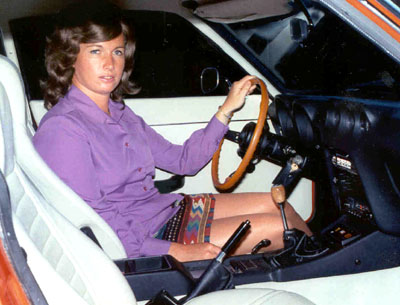
But she was not like any other woman, and her expectations gradually faded. She got close enough to a number of boyfriends to share her past with them. At that point the relationships typically stalled out. "I backed off, thinking I would never find anybody," she says. "I felt good about myself, but I was also thinking that someone might not want to marry someone like me."
Such episodes reminded her of the ever-present danger of exposure. For the most part she kept the truth behind a shroud. At PARC, a place where your academic credentials were as much a part of your identity as the music you listened to or the books you read, she managed never to let on that she had attended MIT and worked on a pioneering supercomputer at IBM. No one ever probed too deeply: It was as if she emitted some imperceptible signal telling colleagues that there were places in her past where one did not go.
Paul Losleben, a computer engineer who worked with her in a 1980s government program, recalls hiking with her one afternoon in the Palo Alto foothills. "I came away just brimming with new ideas without being really sure where they came from," he says. "I was just overwhelmed by her intelligence, her creativity, her grasp of topic." Only later did he reflect on how little she had given up of herself. "It was as though she was a totally professional person," Losleben recalls, "without any personal side."
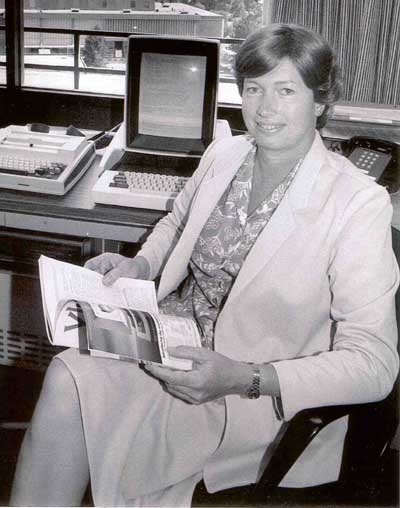
For all that, through the '70s and '80s Lynn detected hints that social attitudes toward transsexuality were changing. In 1983, when Lynn was recruited to head a supercomputer program at the Defense Department's Advanced Research Projects Agency, or DARPA, she sailed through her FBI background check so easily that she became convinced that the Pentagon must have already encountered a transsexual or two in its work force.
Transsexualism may not have achieved mainstream acceptance, but at least it was no longer universally viewed as a transgression against nature. For one thing, there was more public awareness of the condition. Eugene Biber, an American plastic surgeon, had performed his first sex-change operation at his clinic in Trinidad, Colo., in 1969. ("Then the grapevine started," says Biber, who has since performed more than 4,500 operations.) Meanwhile, Harry Benjamin's teachings on transsexualism had spread. Stanford University established a program studying the condition, lending transsexuals valuable credibility. From time to time a prominent transsexual was "outed"--in 1976 it was the tennis player Renee Richards--and to the extent she managed to come through the attendant derision with her dignity intact, transsexualism shed a bit more of its eccentricity. By the late 1970s an estimated 1,000 Americans were undergoing the surgery every year.
Lynn had to forge this path herself. Her mother and father died in the 1970s, still refusing to accept Robert's transition. But by then she had already reconnected with her brother Blair, visiting him while he was in San Francisco for an academic conference.
Blair had been aware of her transition, but they had never had a conversation about it. Now they sat in his hotel room, facing the mutual challenge of brother and brother recalibrating their lifelong relationship--this time as brother and sister. For years Blair, a faculty member at major U.S. university, would struggle to reconcile the male role model of his formative years with this accomplished woman who was part stranger. Over time he found the answer that allowed them to come together again as family. "I think of them now as two different people," he says.
And then, in 1983, Lynn arrived at the most disquieting stretch of uncharted familial territory.
FOR KELLY AND TRACY, THEIR FATHER'S absence was a mystery that reasserted itself at regular intervals. At Christmastime, Lynn paid for presents that would appear under the tree marked "Love, Dad"--apparently so designated by Sue without Lynn's knowledge. Kelly recalled blurting to a teacher in kindergarten or nursery school that she had once glimpsed her father wearing women's clothes (the teacher summoned Sue to warn her against such loose talk). And there were the monthly checks of child support, signed by a "Lynn Conway," whom the girls imagined to be a lawyer or agent of some sort.
"I had no memory of my father," Tracy recalls, "although I had the image in my mind of someone really fabulous." Of the two children, it was she who showed the greater interest in their father. When she turned 15 she began peppering her mother with questions. "I was a teenager watching all my friends be Daddy's little girls, and I wanted to know who my dad was."
But her mother, who had spent more than a decade carefully dodging the painful issue of the phantom Robert, was not about to confront it head-on. Instead she chose to deal with the questions at a safe remove. One day while traveling on business, Sue set down the broad details of Robert's transformation in a letter and mailed it home, addressed to Tracy.
Tracy opened the envelope and moments later burst into her older sister's room. "You're not going to believe this!" They read the letter together. There was something about how their father was "no longer a he, but a she," and how their mother knew something was not right with Robert but not exactly what. The letter could not help but raise more questions than it answered, but Sue remained loath to fill in the gaps. The girls struggled with wrenching questions, including the bedrock riddle of why their father, whatever his condition, had stayed out of their lives.
Finally, when Kelly turned 18 in 1983, Lynn made contact. She reintroduced herself via a series of short notes, then called to invite her daughter to their first face-to-face meeting since that desolate day at the playground. The bafflement and denial that had swept over Kelly upon reading her mother's letter two years earlier had given way to a wary curiosity. They met at a French restaurant in Palo Alto, where Kelly, who had never been to such a place, marveled at how every dish seemed slathered in rich sauce. As they ate, neither knew quite what to say. "It was almost like two strangers meeting, because we really were strangers," Kelly recalls.
Guardedly she brought Lynn up to date on her own life--she was already married and had a baby boy at home. But the strained formality of the setting prevented her from raising the most painful issues between them, including the girls' profound feelings of abandonment. Throughout the dinner she stole glances at the unfamiliar woman across the table, as though searching for signs of herself. "I was trying to come to terms with what our relationship was supposed to be," Kelly recalls. "Was she a friend? My dad? An aunt?" The encounter left Kelly impressed by Lynn's humor and intelligence, but also left too many ancient hurts unhealed. "I didn't know after that night if I'd ever see her again," Kelly says. "She'd been away forever, and I didn't know if she'd really be around."
They met a few more times in California. Then in 1985, after Lynn moved to the University of Michigan as a professor and associate dean, she invited Kelly and Tracy to her new home in Ann Arbor, treating them to a shopping trip, lunch at the university, a day of canoeing, a hint of what she had become during all those years offstage.

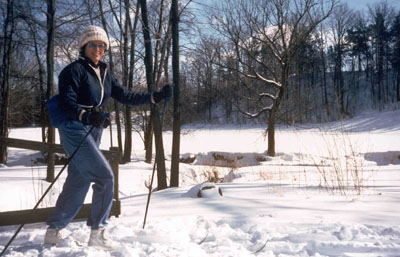
THE REWARDS AND PROFESSIONAL accolades of a distinguished career kept coming in. Lynn received appointments to the board of trustees of MIT's Draper Laboratory and the board of visitors of the U.S. Air Force Academy (commemorated on her kitchen wall by a group photograph of the trustees, all in flight suits, lined up against the red-mountained landscape of Colorado Springs). A figure of undisputed authority in some of the most abstruse corners of computing, Lynn won election to the National Academy of Engineering in 1989.
There was, however, a lingering resentment. DIS, the logic system she had invented at IBM, had become a standard of computer design. Yet others were now claiming credit for the process, years after her brainstorm. Reflecting on her life's tortuous path and wondering if her achievements and those of her IBM colleagues had ever surfaced, she typed the word "superscalar" into an Internet search engine and came up with Mark Smotherman's Web page. It was headed: "ACS--The first superscalar computer?"
Lynn was not surprised that Smotherman had problems unearthing ACS' history. Shortly after Robert Sanders' firing, the project had landed on the wrong side of an internal power struggle at IBM and been shut down. The team members dispersed and IBM's own institutional memory faded. The one place where that memory resided, as it happened, was in Lynn's files. The corporation had been so intent on ushering Robert Sanders out the door that it had neglected to ask him to return any of the project documents in his possession. Lynn still had them: reams of minutes, memos, diagrams--the complete history of a forgotten breakthrough in computer science.
Lynn wrestled with the infinite complications that would be raised should she make the cache public, thereby "outing" herself. Was she entirely comfortable in her role as a woman? Was there perhaps some hint still of shame? Was she a transsexual who happened to be a woman? A woman who happened to be transsexual? Or simply, at last, a woman?
There were many reasons to remain quiet, but threaded through her own life experience, Lynn also glimpsed a reason to step forward. Tens of thousands of transsexuals, whether they had had their operation, were contemplating one, or had chosen to live as the opposite sex without undergoing surgery still were forced to make their way alone, as she had. Who could know how many suffered in solitude, unaware of their options and opportunities, of what their predecessors had learned about living with their condition? Only when homosexuality had come out of the closet did enlightenment start to ease the burden of gays and lesbians. Maybe it was time for transsexuals to benefit from the same process. Almost before knowing it, she had decided. Lynn copied the most important papers. After carefully eradicating her old name and inserting the new on every title page, she sent them to Smotherman and a few old colleagues. She was emerging from stealth.
With the same determination she once devoted to designing and building backyard radio-telescopes and room-sized computers she made contact with old friends, revealed her past and challenged them to see her whole. She directed some to her Web site, www.lynnconway.com, where she posted a candid "retrospective" of her life. Many were surprised at the information, but no one shunned her. "I reassured her that I had known about it and it was OK then and it was OK now," Carver Mead says.
For Lynn herself, the process meant reexamining a lifetime of decisions and choices. Recently, on a drive home from her office in Ann Arbor, Lynn reflected on the path onto which nature had steered her. "I sometimes think that all this stuff"--the achievements of a hard-fought career--"is overcompensation. If I'd been born 20 years later and transitioned at the age of 20, I probably would have found a husband and adopted kids. But I was just too early, and the transition came just too late." She stopped for a few moments. The tears passed. "But I've got to the point where that's just a fact of life."
Besides, she will tell you, she has too much to cherish now to dwell on regrets.
One day in 1987, at a canoe shop in Ann Arbor, she fell into conversation with a fellow enthusiast of nature. She ran into him again a few weeks later at a canoeing party. He was a professional engineer named Charlie, a hunter and outdoorsman who would shortly introduce her to his other passion, amateur motocross racing.
A new possibility, long renounced, reappeared. Within a few months they were living together and by 1994 they were looking for a house to buy. In a rural township about a half hour from Ann Arbor there was a trim little cottage on a few acres of marsh, meadow and wild woodland. Tentatively, as though testing a stove top that had burned before, Lynn sat Charlie down one night and broached a subject she knew she had left too long unaired.
"I think there's something you need to know about me," she said.
"She began filling me in on things I'd never begun to suspect," Charlie recalls. "I've got to say it was a little bit stunning. I was in a fog for a while, absorbing it. But I knew it was probably as hard for her to get into as it was for me to hear it."
He was a single man, never married, distant from his family. Like her, a soul looking for companionship and more. Despite his confusion, he offered reassurance. "On the Huron when we met," he said later, "we were both at a point in our lives where we needed someone like the person we saw the other to be."
That's all Lynn ever wanted. To be seen by others as she had always seen herself. And that's the person her friends and family members have now accepted. Tracy and Kelly have welcomed her into their lives. To their children she is, at last, their beloved "Aunt Lynn." Says Kelly, "I love her and love for her to be in our lives. We're very close and very similar. To us what happened in the past doesn't matter anymore."
- - -

V-3-24-13
LynnConway.com > Media Articles about Lynn Conway